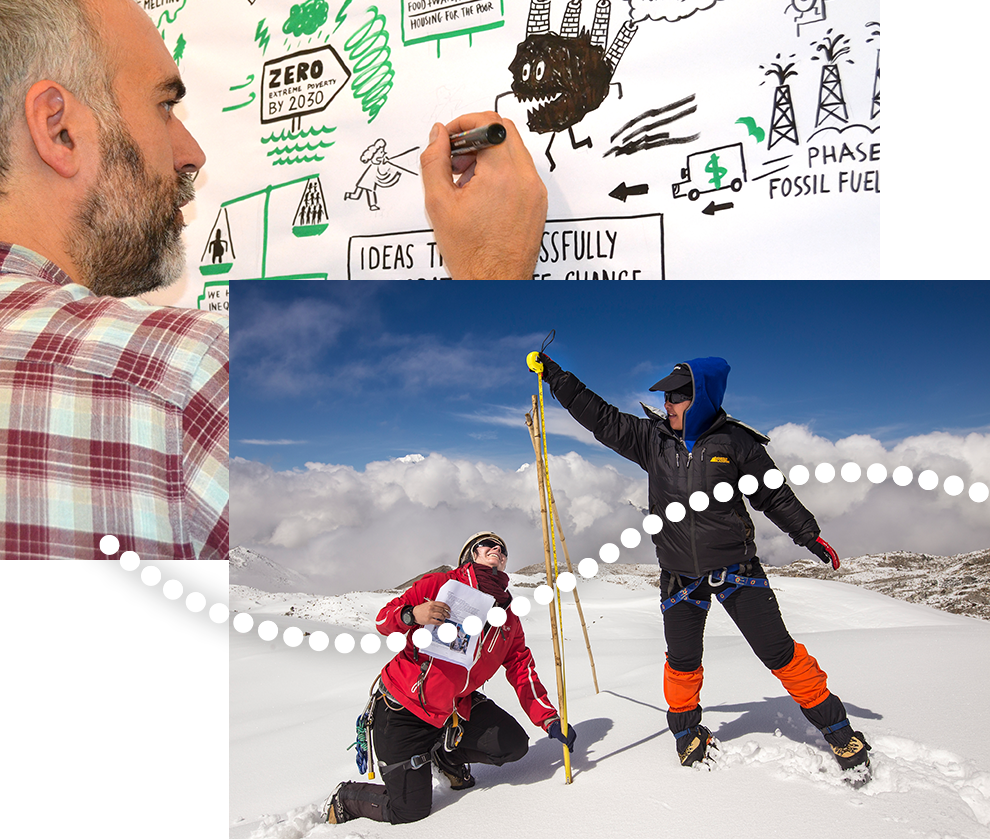Cascading Climate Impacts – Policy Simulation

The following blog presents the Cascading Climate Impacts Simulations tool developed by CASCADES.
Introduction
Policy simulations help to bring researchers, policymakers and society together with the aim of collectively addressing complex problems. Policy simulations aim to bridge the gap between science and science users, and to create an environment for navigating complexity by integrating both problem-oriented (technical, physical, economic) and people-oriented (relational, social, psychological, ethical) issues.
The Cascading Climate Impacts Simulation is a narrative-oriented experience that brings participants to the near future. Participants assume roles of representatives of various countries and organizations responsible for global safety and well-being. In these roles, they discuss and react to current affairs on an online platform. They are confronted with a scenario of dramatic events caused by the climate crisis, that starts from a global agricultural crisis leading to trade and supply chain disruptions. The participants are invited to working groups where they are asked to give their advice regarding some propositions for counteracting the emerging crises.
The goal of the series of workshops with the Cascading Climate Impacts Simulation is to integrate research generated by scientists with the knowledge and experience of stakeholders – and ultimately to develop an effective and efficient science-policy interface.
*You can watch the introductory video at the top of the page to learn more about the cascading climate impacts simulation.
Project
The Cascading Climate Impacts Simulation was developed within the CASCADES project, funded by the European Union’s Horizon 2020 research and innovation programme under grant agreement No 821010.
CASCADES (Cascading Climate risks: towards ADaptive and resilient European Societies) seeks to understand the conditions under which climate risks propagate beyond their geographical, sectoral, and temporal location in ways that may affect European stability and cohesion.
The main objective of CASCADES is to analyze the trade, political and financial channels through which climate change impacts might cascade into Europe from outside, significantly altering Europe’s risk exposure; and to support the design of a coherent European policy framework to address these risks.
Methodology
The first step of preparation of the simulation’s storyline was gathering input from the project partners. To this end, they were asked to a) list plausible chains of cascading events from their area of expertise; b) comment and discuss the cascades created by others. Then, a selection of created cascades was used together with the information gathered by the simulation designers to create a first draft of the scenario to be used in the simulation. The scenario was then consulted again with the project partners during a live/remote workshop, and it was corrected according to their feedback.
The scenario co-developed by Centre for Systems Solutions and the project partners was then used as a basis for creating the main storyline of the simulation. The storyline itself was crafted using the three-act narrative structure modified to the needs of the simulation, and engaging multiple characters. The conflicts in the simulation and the negotiation positions of each role were carefully crafted, taking into account the values and interests of each role.
At the same time, the storyline design was closely associated with the mechanics’ design. The simulation’s mechanics was created according to the principles of procedural representation: the rules of interaction within the simulation crafted to represent, in a simplified manner, real-life processes. Multiple narrative threads in the story allowed the designers to create mechanics that procedurally represented a situation of information overload that is often experienced at the organizational level. In order to create a procedural representation of such a model, the storyline was presented in the form of multiple streams of information coming from the stylized videos and articles posted in the custom social network application. This custom social network called “Impacts” designed for the Cascading Climate Risks simulation was created using a readily available software framework. The software was heavily customized to accommodate the simulation needs.
An iterative approach was guiding the whole design process. A series of partial tests were conducted at each stage of simulation design in order to check how particular features work in action. The designers also carefully tested the technical side of the simulation (videos, custom social network) to improve their user experience.Key messages and lessons learnt
-
We were able to achieve the most critical goals of the workshop: to make the stakeholders familiar with cascading climate impacts and the project’s conceptual framework and to gather from them an initial input in the form of co-created cascades and identified initial responses.
-
Close collaboration between researchers and simulation designers allows developing plausible storylines that can help stakeholders explore possible future climate impacts: most of the participants have broadened their perspective and gained new insights into the complexity of climate change, especially in terms of indirect risks like supply chain disruption and migration. Some of the participants noted that risks and cascades became even more relevant in the situation of COVID epidemics.
-
An online policy simulation is a promising tool for remote stakeholder engagement, and can also be used as a training tool. The storyline and other materials can be easily modified and adapted to different needs. A slightly modified version of the simulation was already used outside of the CASCADES project activities for diplomatic training purposes. Another version focusing specifically on the future of the Arctic was a part of the 2020 Canadian Science Policy Conference.
- Climate-resilient trade and production: the transboundary effects of climate change and their implications for EU member states
- Building a climate-resilient and just future for all: Managing cascading climate risk in global supply chains
- Cascading climate impacts: a new factor in European policy-making

Comments
There is no contentYou must be logged in to reply.